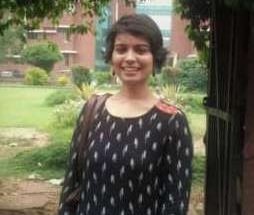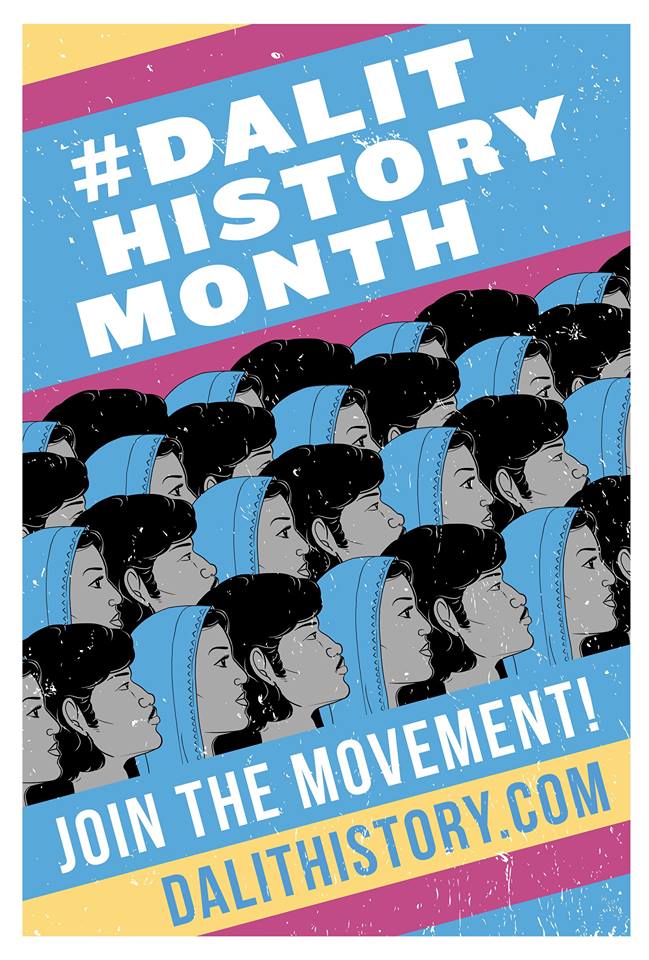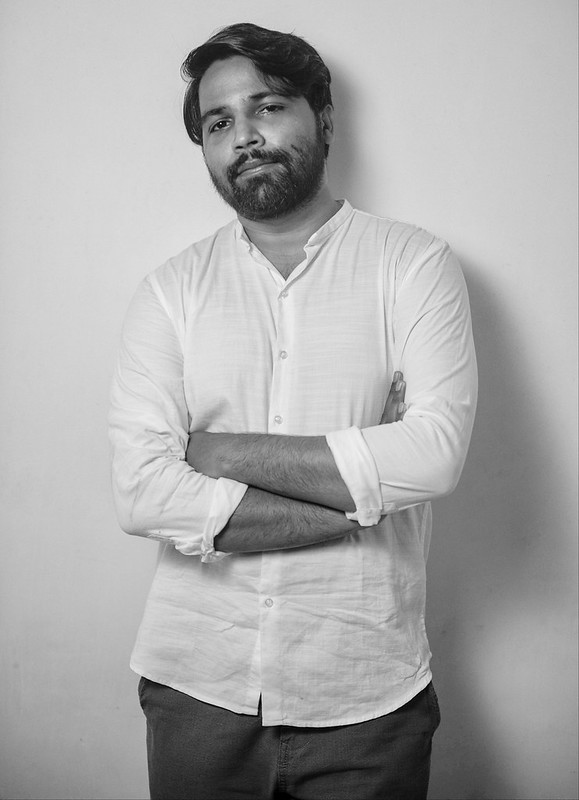N Sukumar and Shailaja Menon
The NEP 2020 has been rolled out amidst the Corona pandemic with the grandiose dreams of unleashing India’s potential as a world teacher (Vishwaguru). Ironically, a few months back police stormed the library of Jamia Millia Islamia, thrashed students and vandalized the reading space. No one knows when the culprits will be brought to justice, if at all. The NEP states that it wants to set up libraries in every district and inculcate the reading habit among the children. In a climate, when students are anxious about appearing for a range of examinations, entrance tests to end semester exams, coupled with the fear of dropping out of classes due to the monetary crisis wrought by Covid 19 why is the state in a hurry to push through reforms in the education sector?

Police attack Jamia students in library
The University in India
Habermas considered universities as essential for society’s progress, but the fact that it contains within itself the seeds of the reproduction of social lifeworlds, meant that constant vigilance is required to unleash its transformative potential. Hence, education has always been viewed as a contested terrain especially in highly unequal societies. Heuristically speaking, education is perceived as serving one of two purposes in society. It either serves to ‘domesticate’ and strengthen the existing relations of power and therefore perpetuates the ills such as socio-economic, cultural and environmental, critiqued throughout its corpus of literature, rendering conditions of oppression as non-existent or else it serves to ‘liberate’ in contributing to the ushering in of a new world in which principles of social justice and ecological sustainability are upheld.
Reflecting on the lived realities of Dalit-Bahujan students in the university, P Thirumal1 argued that the reproduction of everyday institutional embodiment that displays a direction and an intensity that allow dominant bodies to realise their unfinished being. Thirumal demonstrates this process of embodiment as revealed in the cultural world of the upper castes in three phases; the domains of cellular, intellectual and social reproduction. He refers to caste-plaining in everyday discourse. The universities are organized like elite clubs which need to be barricaded against the entry of the rustic/mofussil riffraff. It will undermine the cosmopolitan character of these institutions. “The backward as a servant, ‘subziwala’, dhobi’ or cobbler is all right, but god forbid if his children were to rub shoulders with you. Teaching agricultural economics is relevant but heaven forbid if you have to teach it to the lesser Devi Lals of the world. The biologist Garret Hardin used the picture of the lifeboat to convey a basic idea in sociobiology. Picture an ocean where a lifeboat full of rich people is floating. Swimming around them are the poor. The question is, should one go to the aid of the poor and backward or let them drown? Hardin argues that the poor are irredeemable and going to their aid may sink the boat. Only our elite do not use the language of sociobiology. We talk the language of merit as justice assuming that life is a race without handicaps”2. Unfortunately, the NEP fails to provide a roadmap to create a truly egalitarian society.
The NEP document commences with a scientific axiom by pointing out that 85% cumulative brain development is completed by age 6. The reality is that 2022, India will have 46.6 million children who are stunted, and 25.5 million children who have low weight for height3. The mid day meal scheme is one of the largest nutrition programs in the world and various studies have shown its positive benefits on learning outcomes4. However, when food is spiritualized at the cost of nutrition in many BJP ruled states, the nutrition levels get adversely affected. Such stunted children lose the race even before the starting gun has fired.
The NEP aspires to restore the ‘Indianness’ of the education system and envisages that the curriculum and pedagogy should be “rooted in the Indian and local context and ethos in terms of culture, traditions, heritage, customs, language, philosophy, geography, ancient and contemporary knowledge, societal and scientific needs, indigenous and traditional ways of learning etc5“. On the one hand, there is a lot of talk on dismantling rote learning, making the students think creatively and innovatively. How is it possible when the template of what constitutes ‘Indianness’ and who is identified as an ‘Indian’ is already laid out by the state? Will the pedagogy be comfortable discussing North East cultures and cuisines or Dalit food habits/festivals? The story of the Breast Tax in Kerala mysteriously vanished from NCERT textbooks. The emergence of religious obscurantism and its glorification in the academic domain has only promoted half myths and spurious science. Even during the pandemic when quacks were peddling cow urine as a medicine or the public ritual of beating utensils and lighting candles to banish the disease, any official policy which states its objective of promoting scientific temperament is laughable. When the powers that be frown on any expression of dissent and scholars/artists have been jailed on flimsy excuses, how will critical pedagogy be encouraged? “To make it easier for both governments as well as non-governmental philanthropic organizations to build schools, to encourage local variations on account of culture, geography, and demographics, and to allow alternative models of education, the requirements for schools will be made less restrictive”6. The fine print makes it clear that Saraswathi Shishu Vihars and Vanvasi Kalyan Ashrams will be legitimized under the garb of philanthropic organizations and there will be fewer bottlenecks to set them up. Since the party in power finds terms like secularism, socialism, republic to be problematic, the NEP document is silent on them.
The Language Conundrum
After the tensions and protests in South India regarding the imposition of Hindi under the guise of the new linguistic policy, the NEP tries a balancing act by stating that the aim of the new program is to promote multilingualism. “However, there will be a greater flexibility in the three-language formula, and no language will be imposed on any State. The three languages learned by children will be the choices of states, regions, and of course the students themselves, so long as at least two of the three languages are native to India. In particular, students who wish to change one or more of the three languages they are studying may do so in Grade 6 or 7, as long as they are able to demonstrate basic proficiency in three languages (including one language of India at the literature level) by the end of secondary school7“. Sanskrit will be mainstreamed with strong offerings in school – including as one of the language options in the three-language formula – as well as in higher education8. If children are to have the option of choosing different languages to study then why Sanskrit should be mainstreamed? The status of English is again under a scanner. In Pondicherry, French is part of their everyday linguistic discourse, so can students opt for French language along with any other Indian language? What explains the disapproval expressed by Hindutva forces in Banaras Hindu University when a faculty from a Muslim background was selected to teach Sanskrit? Can we imagine a scenario where Dalit-Bahujans will be permitted to learn and teach Sanskrit in the vedic pathshalas and the proposed vedic universities? Will the medium of instruction in foreign universities which will set up shop in India, also be regional languages? So far, the three language formula was never followed in North India as the schools never taught south Indian languages whereas Hindi was taught across the country. What will be the fate of existing English Medium schools? What happens to children who belong to multilingual families? When freedom of language is being promoted, let the choice be provided to the parents and children as to their preferred language of instruction? In the Hindi heartland of Uttar Pradesh, around 2.70 lakh students failed to secure passing marks in Hindi in Intermediate, while 5.28 lakh students in High School failed in their Hindi paper. Around 2.39 lakh students of High School and Intermediate of the Board had skipped their Hindi papers. A high school teacher who evaluated Hindi copies for Class XII, said on condition of anonymity, that majority of the students tend to ignore Hindi because they feel there is no need to study the language which does not offer future prospects9.
The NEP 2020 emphasizes “recognizing, identifying, and fostering the unique capabilities of each student”, which is indeed a laudable exercise. However, in a hierarchical society where the divide between brains and hands is deeply entrenched, the pre-existing notions of merit will continue to hold sway. In addition, the stress on vocational and skill based learning like carpentry, electric and metal work, gardening, pottery making, etc would further augment caste based professions. The proposal of exit strategies needs to be further worked out else it will end up legitimizing dropouts. The idea of ‘one nation-one culture’ is reinforced by undue emphasis on ‘classical’ aspects of heritage, arts and philosophy. Whose culture will form part of the pedagogy is a subjective decision. Do dalit/tribal life worlds form part of the classical tradition? On many campuses, theatre festivals, seminars, food festivals etc have been attacked on the grounds of cultural nationalism.
Discrimination and the Campus
Despite the multiple problems plaguing public universities, it is the only democratic site which offers an opportunity for various communities to interact in a comparatively liberal atmosphere. The public university is thus a unique and historically unprecedented space from the point of view of the democratisation of society. This is also the reason why existing social hierarchies and power centres are beginning to view it as a threat10. There is a complete silence on reservations for SC/ST/OBCs both at the level of students and recruitment of faculty. The NEP speaks of communication, teamwork and resilience but fails to explain the context of the statement. In a scenario, where dalit bahujan students are dropping out of professional courses and universities and in worst cases, even committing suicides, it reflects a complete breakdown of cooperation and empathy within academic spaces which breaks the coping mechanism of the marginalized students. If those helming the University of Hyderabad had pondered over the deep anguish of Rohith Vemula’s letter, “Please serve 10mg Sodium Azide to all the Dalit students at the time of admission. With direction to use when they feel like reading Ambedkar. Supply a nice rope to the rooms of all Dalit students from your companion, the great Chief Warden”, he would not have termed his birth as a fatal accident. In all the cases of dalit-bahujan students committing suicides or dropouts, the authorities have willfully ignored the warning signals. So, resilience for dalit-bahujans is to meekly accept their fate, make the best of it and move on.
The absence of any mention on reservations makes one wonder as to how the goal of equity and inclusion in education will be achieved. The private institutions are reluctant to accept any idea of affirmative action. Financing their education has become a major source of exploitation especially for the marginalized groups. The NEP document has failed to provide any financial outlays to address this issue given the fact that in the coming days, student enrolment will be affected by the pandemic and the economic crisis. IITs, IIMs, IIITs and central universities are encouraged to go for self-financed courses. Many campuses were protesting these measures and NIFT students are running from pillar to post to get their fees waived off in the light of the uncertain future. The NEP endows a warm glow that things are finally changing for the better; the next generation will be transformed into ‘better Indians’ and we will turn into a vishwaguru. The NEP 2020, promises Ache Din for the private players in education. However, as Colson Whitehead’s observed in his novel The Underground Railroad, “The Declaration [of Independence] is like a map,” he wrote. “You trust that its right, but you only know by going out and testing it for yourself.”
~
Notes
1. P Thirumal, Dominant Bodies and their Ethical Performances; Violence of Caste Embodiment in Higher Educational Institutions, EPW, January 18, 2020, Vol LV No 3, pp 36-40
2. Shiv Vishwanathan, Democracy, Plurality and Indian University, EPW, September 30, 2000, p 3604
p 3603
3. India has one-third of world’s stunted children: Global nutrition report https://economictimes.indiatimes.com/news/politics-and-nation/india-has-one-third-of-worlds-stunted-children-global-nutrition-report/articleshow/66865016.cms?from=mdr, November 29, 2018
4. Shreya Roy Chowdhury, The correlation between midday meals and learning outcomes, https://idronline.org/the-correlation-between-midday-meals-and-learning-outcomes/ March 19, 2019
5. NEP 2020, MHRD, Govt of India, p 16
6. NEP 2020, MHRD, Govt of India, p 12
7. NEP 2020, p 15
8. Ibid, p 55
9. UP Board exams: 7.97 lakh students fail in Hindi, The Tribune, https://www.tribuneindia.com/news/schools/up-board-exams-7-97-lakh-students-fail-in-hindi-106109, June 29, 2020
10. Satish Deshpande, The Public University after Rohith–Kanhaiya, EPW, March 12, 2016 vol lI, no 11, pp 32-34
~~~
N Sukumar teaches Political Science at Delhi University. Shailaja Menon teaches History at the School of Liberal Studies, Ambedkar University, Delhi.










